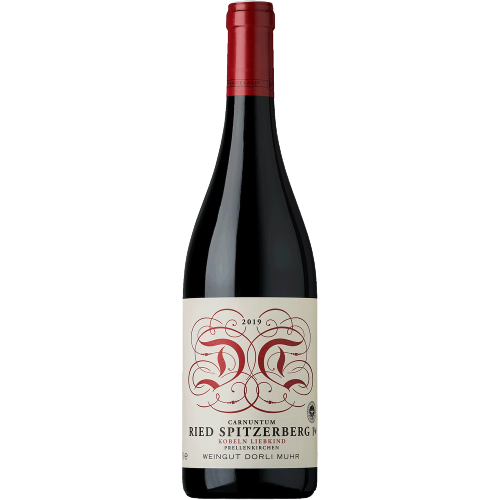Ried Spitzerberg-KOBELN LIEBKIND 1ÖTW 2019
Beskrivelse & specifikationer
Beskrivelse & specifikationer
Sted & jordbund
Med sine 300 meters højde over havet er Ried Kobeln den højest beliggende vinmark på Spitzerberg. Her er laget af overjord meget tyndt, og eksponeringen for vind er usædvanligt åben, hvilket resulterer i ekstremt lave udbytter.
I 2008 blev der plantet et parcel på 1,1 hektar, som i gennemsnit giver omkring 1.500–2.000 kg druer. Disse særlige Blaufränkisch-druer er meget små – med en gennemsnitlig diameter på kun 8 mm – og bidrager derfor med en høj koncentration af tannin og aromatisk stof til vinen. Resultatet er Liebkind, en vin der kræver endnu længere tid til at modne. Erfaringen viser, at dens fulde elegance og finesse først kommer helt til udtryk efter omkring fem til seks års lagring.
Høst & vinifikation
For at undgå marmeladeagtige aromaer er det i denne ekstremt tørre vinmark afgørende ikke at vente en eneste dag for længe med høsten. Druerne plukkes i hånden, og hver overmoden bær fjernes omhyggeligt.
I kælderen bliver druerne let knust og macereret delvist med stilke i åbne gæringskar. Ekstraktionen foregår meget nænsomt og helt uden brug af pumper. Gæringen starter efter nogle dage takket være de naturligt forekommende gærstammer. Den spontane gæring forløber langsomt og ved stuetemperatur – mosten bliver hverken opvarmet eller afkølet. På den måde bevares Ried Kobelns særegne udtryk, uden at vinen bærer præg af varme eller overmodenhed.
Efter cirka tyve dage presses vinen og modnes derefter i et stort, gammelt træfad. Under de tyve måneders lagring omstikkes vinen kun én gang og tappes til sidst uden filtrering.
Den samlede produktion er på 1.000 flasker.
“Dark and mysterious with dense elderberry and summer-flower aromas, plus a pronounced hot dry-earth character. Rich, highly structured and velvety palate… intensely stony finish and tremendous drive. Great aging potential”.
James Suckling, 96 Points (årg. 2020)
Land: Østrig
Region: Carnuntum
Appellation: Spitzerberg
Druesort: 100% Blaufränkisch
Alkohol: 13,0%
Vintype: Rødvin
Indhold: 75 cl.
Spitzerberg
Man kan måske forestille sig Spitzerberg som et rev, hvor det urtidslige hav i millioner af år brød mod klipperne. Som følge heraf er Spitzerberg dækket af et tykt lag kalksten, som stammer fra “geologiens middelalder”. Den sandede jordbund holder kun lidt på vandet, og bjerget – omkring 300 meter højt – ligger altid åbent for kraftige vinde og høje temperaturer. Der er ingen tvivl om den karakterfulde natur hos druer dyrket på Spitzerberg. De ekstreme forhold giver vidunderligt aromatiske vine med kompleksitet og dybde, en fint vævet, filigran struktur og et forfriskende syregrundlag.

Spitzerberg er en cirka 5 km lang og 300 meter høj kalkstenskam i det østligste Carnuntum. Den ligger yderst vindeksponeret mellem Alperne (Leithabjergene) og Karpaterne (Hainburg-bakkerne). Takket være det konstante brænding fra det forhistoriske hav, der engang dækkede området, blev et tykt lag kalksten aflejret på skråningerne, som over tid eroderede til sandkornsstørrelse.
Nedbøren på Spitzerberg er kun omkring 400 mm om året, og sommertemperaturerne når ofte 35–40°C. Den sandede kalkstensjord kan kun opbevare meget lidt vand. Dette resulterer i meget lave udbytter ved høst – maksimalt 3.000 kg druer pr. hektar.




